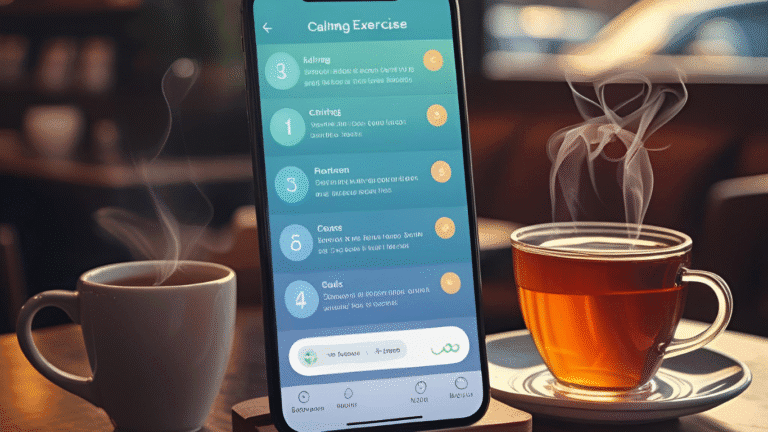Intermittent Fasting Weight Loss Made Simple
Intermittent Fasting Weight Loss is quickly becoming one of the most popular and sustainable ways to shed pounds and feel energized—without counting every calorie.
People are turning to intermittent fasting not just for quick fat loss, but for its powerful health benefits like improved metabolism, mental clarity, and reduced cravings. By simply adjusting when you eat—not necessarily what you eat—your body learns to burn fat more efficiently.
In this guide, you’ll discover how intermittent fasting works, why it’s so effective for weight loss, the best methods for beginners, and simple tips to stay consistent without feeling deprived. If you’re looking for a proven and realistic approach to lose weight, this blog is for you.
🥗 What Is Intermittent Fasting?
Intermittent fasting (IF) is an eating pattern that alternates between periods of eating and fasting. Instead of focusing on what you eat, it focuses on when you eat. It’s a flexible and natural approach that fits into your lifestyle while supporting intermittent fasting weight loss goals.
🔄 Common Intermittent Fasting Methods:
- 16:8 Method – Fast for 16 hours, eat during an 8-hour window (e.g., 12 PM to 8 PM)
- 5:2 Method – Eat normally 5 days a week, reduce calories (500–600) on 2 non-consecutive days
- Alternate-Day Fasting – Fast every other day, or significantly reduce calorie intake on fasting days
🔬 How It Affects Your Body:
During fasting, your insulin levels drop, allowing your body to access stored fat for energy. Human growth hormone increases, promoting fat burning and muscle gain. Your metabolism becomes more efficient, and your body enters a state called ketosis, where fat becomes the primary fuel source.
💪 Why It Works for Weight Loss:
Intermittent fasting naturally reduces calorie intake without strict dieting. It also:
- Boosts fat burning and metabolism
- Reduces snacking and late-night cravings
- Improves insulin sensitivity, aiding fat loss
- Encourages mindful eating habits
For many people, intermittent fasting weight loss feels easier and more sustainable than traditional diets—because you’re not constantly thinking about food or fighting hunger.
🔬 How Intermittent Fasting Supports Weight Loss
Intermittent fasting supports Intermittent Fasting Weight Loss through multiple scientifically proven hormonal and metabolic mechanisms:
1. Hormonal Shifts: Insulin, Ghrelin, Leptin & Adiponectin
Fasting significantly reduces insulin levels and improves insulin sensitivity—key drivers in unlocking stored fat for energy. Meta-analyses show that intermittent fasting lowers insulin resistance (HOMA-IR) and fasting insulin compared to regular diets PubMed+15Business Insider+15New York Post+15.
It also reduces leptin (the “satiety” hormone) and ghrelin (the “hunger” hormone), helping to regulate appetite naturally, though findings vary across protocols and individual contexts . Increased adiponectin—a hormone linked to improved fat metabolism—has also been observed in some studies, supporting long-term fat loss and insulin function PubMed+1BioMed Central+1.
2. Fat-Burning & Metabolic Boosts
With lowered insulin during fasting, the body ramps up fat burning by breaking down fat cells into fatty acids and ketones. This switch increases lipolysis and can even trigger autophagy—a cellular “clean-up” process—especially during fasts over 24–36 hours .
3. Clinical Outcomes: Weight Loss & Cardiometabolic Benefits
Numerous meta-analyses of randomized controlled trials show that intermittent fasting results in moderate but meaningful weight loss—typically 2–5 kg over several weeks to months—with reductions in BMI and waist circumference comparable or slightly superior to standard calorie-restricted diets .
One umbrella review found moderate to high-quality evidence that alternate-day, 5:2, and time-restricted eating significantly reduce body weight, BMI, fat mass, triglycerides, LDL cholesterol, and fasting insulin in overweight or obese adults JAMA Network+1PubMed+1.
4. Why It Works for Intermittent Fasting Weight Loss
- Reduces calories naturally, without strict tracking or constant hunger.
- Improves metabolism and fat oxidation, shifting fuel from glucose to stored fat.
- Rebalances hunger hormones, helping control cravings and overeating.
- Improves blood markers like triglycerides and insulin—even independent of weight loss.
✅ Key Clinical Study Highlights
- A meta-analysis of 14 trials with over 1,100 adults with prediabetes or type 2 diabetes found weight was reduced by 4.6 kg, BMI by ~2 kg/m², and fasting glucose improved compared to control diets (though fat mass reduction varied) PubMed.
- Among individuals with overweight or metabolic syndrome, pooled data indicate INCREMENTS: weight loss of ~1.8 kg greater with IF vs. calorie restriction under equal calories; BMI fell by around 1.1 kg/m²; reduction in triglycerides and LDL-C; improved insulin resistance .
📚 Recommended Research & Study Links:
- Meta‑analysis on type 2 diabetes and weight outcomes via PubMed (March 2024)
- Meta‑analysis in Chinese population showing reductions in weight, BMI, insulin resistance, lipids
- Hormonal regulation review (leptin, ghrelin, adiponectin) in fasting regimens
- Umbrella review of IF effects on obesity‑related outcomes (JAMA, up to 2021) JAMA Network+1Reddit+1
⏰ Choosing the Right Fasting Method
Not all fasting methods are created equal—and choosing the right one is key to long-term intermittent fasting weight loss success. Each approach offers unique benefits depending on your goals, schedule, and lifestyle.
🔹 1. 16:8 Method (Time-Restricted Eating)
How it works: Fast for 16 hours, eat during an 8-hour window (e.g., 12 PM–8 PM).
Great for: Beginners, busy professionals, and anyone new to fasting.
Pros:
- Easiest to stick with long-term
- Doesn’t require calorie counting
- Improves insulin sensitivity and fat-burning
Cons:
- May lead to overeating in the eating window if not mindful
- Requires adjustment to skipping breakfast
✅ Best for sustainable intermittent fasting weight loss and daily consistency
🔹 2. 5:2 Method
How it works: Eat normally for 5 days, restrict calories to 500–600 on 2 non-consecutive days.
Great for: People who prefer structure and want fast results without daily fasting.
Pros:
- Less daily restriction
- Can lead to meaningful weight loss and metabolic benefits
- Helps reduce weekly calorie intake significantly
Cons:
- Hunger on fasting days can be challenging
- Requires discipline to avoid bingeing on non-fasting days
✅ Effective for those who want flexibility while losing weight
🔹 3. Alternate-Day Fasting (ADF)
How it works: Alternate between full fasting days (or very low calorie days) and normal eating days.
Great for: People with experience in fasting or those targeting faster fat loss.
Pros:
- Promotes rapid fat loss and reduced inflammation
- Backed by strong clinical evidence
- Increases metabolic rate during fasting
Cons:
- Can be intense or unsustainable for beginners
- May interfere with social or work life
✅ Best for advanced fasters or short-term fat loss goals
🔹 4. OMAD (One Meal A Day)
How it works: Eat one large meal in a 1-hour window, fast for 23 hours.
Great for: Highly disciplined individuals with a flexible lifestyle.
Pros:
- Significant reduction in calorie intake
- Efficient fat-burning during long fasting window
- Minimal meal prep needed
Cons:
- Difficult to meet all nutrient needs in one meal
- May lead to fatigue or dizziness, especially for beginners
✅ Not recommended for beginners; use with medical supervision
🏁 Which Method Is Best for You?
For most beginners, the 16:8 method is the easiest and most sustainable starting point for intermittent fasting weight loss. It blends well with most lifestyles and helps create healthy habits around meal timing without feeling too restrictive.
If you want to accelerate fat loss or break through a plateau, consider trying the 5:2 method or alternate-day fasting once your body has adapte
🥗 What to Eat During Eating Windows
When practicing intermittent fasting weight loss, what you eat during your eating window matters just as much as when you eat. Choosing the right foods can boost fat burning, support muscle retention, and help you feel full and energized throughout your fast.
🥦 Focus on Nutrient-Dense, Whole Foods
Nutrient-dense foods provide more vitamins, minerals, fiber, and antioxidants for fewer calories—ideal for weight loss and overall health. Make every meal count by including:
- Lean proteins: chicken, turkey, eggs, tofu, tempeh, fish
- Healthy fats: avocado, olive oil, nuts, seeds, fatty fish (salmon, sardines)
- Fiber-rich carbs: sweet potatoes, oats, brown rice, quinoa, lentils
- Non-starchy vegetables: spinach, broccoli, cauliflower, kale, zucchini
- Low-sugar fruits: berries, apples, grapefruit, kiwi
These foods keep you full longer, stabilize blood sugar, and prevent energy crashes—all essential for successful intermittent fasting weight loss.
🍽️ Build Balanced Meals for Fat Loss
Each meal during your eating window should be a balanced plate. A simple formula to follow:
🥩 Protein + 🥬 Fiber-rich veggies + 🍠 Complex carbs + 🥑 Healthy fats
Example Meal Ideas:
Lunch (1st meal of the day): Grilled chicken, quinoa, roasted vegetables, olive oil drizzle
Dinner: Baked salmon, steamed broccoli, brown rice, avocado slices
Snacks (if needed): Greek yogurt with chia seeds, boiled eggs with cucumber, mixed nuts
Balanced meals support metabolism, muscle retention, and satiety—critical for fat loss and hormonal balance.
⚠️ Common Eating Mistakes to Avoid
Even within an eating window, it’s easy to derail your intermittent fasting weight loss progress with poor food choices or habits:
1. Overeating “Because You Fasted”
Fasting doesn’t give a free pass to binge. Overeating high-calorie, low-nutrient foods cancels out calorie deficits and spikes insulin.
2. Relying on Ultra-Processed Foods
Frozen dinners, sugary protein bars, packaged snacks, and takeout meals are often high in sodium, trans fats, and added sugars. These cause inflammation and hinder weight loss.
3. Skipping Protein
Low protein intake can lead to muscle loss and increased hunger. Make protein the star of every meal to stay full and preserve lean muscle mass.
4. Eating Too Close to Your Fasting Window
Late-night eating (especially heavy carbs/fats) can spike blood sugar and disrupt sleep. Try to finish your last meal at least 2–3 hours before your fast begins.
5. Drinking High-Calorie Beverages
Juices, sodas, creamy coffees, and alcohol add hidden calories and can trigger insulin—slowing fat burning. Stick to water, black coffee, or herbal tea during fasts.
✅ Smart Tip:
Prep your meals in advance. This reduces decision fatigue and helps you stay focused on nutrient-rich, fat-burning choices when hunger hits.
🧠 Is Intermittent Fasting Right for You?
While intermittent fasting weight loss can offer powerful results, it’s not the perfect solution for everyone. Your body, schedule, and health history all play a role in whether fasting is a safe and sustainable approach.
🚫 Who Should Avoid Intermittent Fasting
Although many people thrive on intermittent fasting, some groups should avoid or modify fasting protocols unless advised otherwise by a healthcare provider:
- Pregnant or breastfeeding women – Nutritional needs are higher during these times
- People with a history of eating disorders – Fasting can trigger disordered eating behaviors
- Individuals with diabetes or blood sugar issues – Especially those on insulin or medication
- People with chronic health conditions – Like heart disease, kidney issues, or adrenal fatigue
- Underweight individuals or those with low BMI – Risk of nutrient deficiency or muscle loss
🩺 Medical Disclaimer: Always consult your doctor before starting any fasting regimen, especially if you have underlying medical conditions or are taking prescription medications.
🩻 When to Talk to a Healthcare Provider
Even if you’re generally healthy, check in with a healthcare provider if:
- You experience dizziness, fatigue, or irregular periods after starting IF
- You’re unsure about balancing medications with fasting times
- You have concerns about nutrient intake or specific diet restrictions
- You’re considering longer fasts (24+ hours) or alternate-day fasting
A doctor or registered dietitian can help you personalize the approach and monitor your progress safely.
🎯 Personalization Is Key to Success
The beauty of intermittent fasting weight loss lies in its flexibility. You don’t need to follow the most extreme version to get results. Start slow, choose a method that fits your lifestyle, and listen to your body.
What works for someone else may not work for you—and that’s okay.
Focus on consistency, quality nutrition, and a routine that supports your energy, mood, and long-term health.
Conclusion
Intermittent Fasting Weight Loss isn’t about starving yourself or following a rigid diet—it’s about working with your body’s natural rhythms to burn fat, balance hormones, and boost your energy.
By choosing a beginner-friendly method like the 16:8 approach, focusing on whole, nutrient-rich foods, and staying consistent, you can achieve real, lasting results—without feeling deprived or overwhelmed.
Whether your goal is to shed a few pounds, improve digestion, or just feel better overall, intermittent fasting offers a flexible and effective path forward.
❓ Frequently Asked Questions (FAQ)
Q1: How long does it take to see results from intermittent fasting?
Most people notice initial intermittent fasting weight loss within 2–4 weeks, especially if paired with nutrient-rich meals and consistent eating windows.
Q2: Can I drink coffee or tea while fasting?
Yes! Black coffee, plain tea, and water are allowed during fasting periods. Just avoid cream, sugar, or anything with calories that could break your fast.
Q3: Will intermittent fasting slow my metabolism?
No—short-term fasting may actually boost metabolism slightly. Long-term fasting without proper nutrition, however, could cause metabolic slowdown.
Q4: Is intermittent fasting safe for women?
Yes, but women may respond differently. Some may benefit from gentler approaches like the 14:10 method. Always listen to your body and consult a doctor if needed.
Q5: Do I need to count calories while intermittent fasting?
Not necessarily. Many experience intermittent fasting weight loss without counting calories—but it still helps to avoid overeating and focus on whole foods.
Q6: What breaks a fast?
Anything with calories—like juice, milk, or snacks—will break a fast. Stick to zero-calorie drinks during fasting hours.
Q7: Can I exercise while intermittent fasting?
Yes! Light to moderate exercise is safe and often encouraged. If doing intense workouts, time your eating window to support recovery and energy.
Q8: What if I feel tired or dizzy while fasting?
Fatigue can happen early on as your body adjusts. Stay hydrated, eat enough during your eating window, and ensure you’re not under-eating. If it continues, consult a healthcare professional.
Disclaimer:
This content is for informational purposes only and does not constitute medical advice. Always consult your doctor or a qualified healthcare provider before starting any diet, fasting program, or lifestyle change—especially if you have a medical condition or take medication.

Ellie Clark is a passionate blogger with a specialty in education, where she shares insights on learning methods, study strategies, and ways to make knowledge more accessible. With a background in teaching and a love for lifelong learning, she brings clarity and creativity to her writing, helping readers of all ages unlock their potential. While education remains her core focus, Ellie also writes on a variety of other topics, including lifestyle, travel, and personal development, giving her blog a well-rounded appeal.
When she’s not writing, Ellie enjoys reading, exploring new cultures, and spending time in nature. Her approachable style and thoughtful advice make her a trusted voice for readers seeking both guidance and inspiration.


